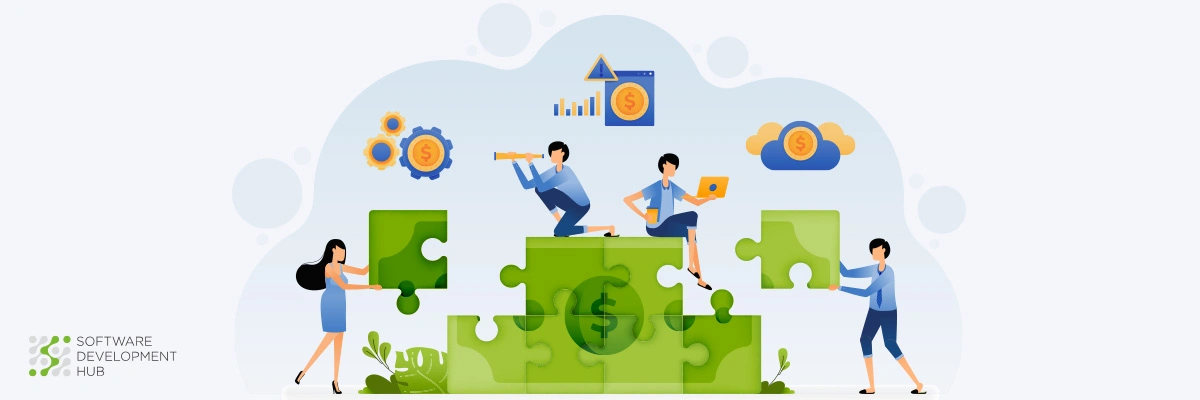DevOps Implementing BOT (Build-Operate-Transfer) Model
Most organizations are now adopting DevOps methodologies to improve the delivery of software, but they face challenges related to resource management, expertise, and long-term scalability. The successful implementation of DevOps requires a delicate balance between automation, process optimization, security, and cultural change within development and operations teams.
The BOT model is one of the most effective ways of implementing DevOps, especially in cases where a company lacks experience or is willing to get it done in an organized manner. The processes for setting up, managing, and eventually transferring the DevOps to the customer are structured in the BOT model. This model provides a way by which businesses can speed up the adoption of DevOps with limited risk and are guaranteed a seamless handover of processes and tools.
What is the BOT (Build-Operate-Transfer) Model?
The Build-Operate-Transfer (BOT) model is a strategic approach that enables organizations to outsource the initial setup and management of DevOps operations while retaining the ability to take full control once the framework is established.
This model consists of three key phases:
- Build – Setting up the DevOps infrastructure, tools, workflows, and processes.
- Operate – Running and optimizing DevOps operations while training the in-house team.
- Transfer – Handing over the fully functional DevOps environment to the organization.
The BOT model is commonly used in IT outsourcing, cloud migrations, and DevOps transformations because it provides expert guidance, operational stability, and long-term sustainability.
How the BOT Model Works in DevOps Implementation
1. Build Phase: Setting Up the DevOps Infrastructure
In the Build phase, an external DevOps service provider collaborates with the organization to design, implement, and configure DevOps tools, infrastructure, and workflows. This phase focuses on laying the foundation for a fully functional DevOps environment.
Key Activities in the Build Phase:
- Assessment & Strategy Development – Analyzing existing processes, identifying gaps, and creating a DevOps roadmap.
- Tool Selection & Implementation – Setting up CI/CD pipelines, container orchestration (Kubernetes, Docker), infrastructure as code (Terraform, Ansible), and cloud platforms (AWS, Azure, GCP).
- Automation & Security – Implementing code quality checks, automated testing, monitoring, and security practices.
- Team Structure & Governance – Defining roles, responsibilities, and collaboration models between development, operations, and security teams.
By the end of this phase, the DevOps framework is fully designed and ready for operation.
2. Operate Phase: Managing & Optimizing DevOps Processes
Once the DevOps infrastructure is built, the project moves into the Operate phase, where the external provider takes charge of running and optimizing DevOps operations. This ensures a stable, high-performing environment before transitioning control to the organization.
Key Activities in the Operate Phase:
- Continuous Monitoring & Optimization – Ensuring uptime, performance efficiency, and security compliance.
- Training & Knowledge Transfer – Educating the in-house team on DevOps tools, workflows, and best practices.
- Gradual Ownership Transfer – Transitioning responsibilities from the external provider to internal teams.
- Scaling & Performance Tuning – Enhancing DevOps workflows based on business needs and future growth plans.
This phase is critical because it fine-tunes the DevOps environment and prepares the in-house team to take full ownership.
3. Transfer Phase: Handover of DevOps Operations
In the Transfer phase, the external DevOps provider hands over full control of DevOps operations to the in-house team. The transition is gradual and structured to ensure minimal disruption.
Key Activities in the Transfer Phase:
- Full Documentation & Handover – Providing detailed documentation, SOPs, and operational guidelines.
- Final Training & Support – Conducting final workshops, knowledge-sharing sessions, and Q&A support.
- Performance Review & Audit – Ensuring that the internal team is fully capable of maintaining DevOps processes independently.
- Exit Strategy & Post-Transition Support – Offering a short-term support period for troubleshooting and additional training.
By the end of this phase, the organization has full control over DevOps operations and can sustain long-term automation, monitoring, and security practices without external dependency.
Benefits of Using the BOT Model for DevOps
- Accelerated DevOps Adoption – Enables organizations to implement DevOps faster with expert guidance.
- Reduced Implementation Risk – Minimizes risks associated with trial-and-error DevOps adoption.
- Cost-Effective & Scalable – Allows businesses to scale DevOps infrastructure without heavy upfront investments.
- Ensures Knowledge Transfer – Provides structured training and skill development for internal teams.
- Operational Stability Before Handover – Ensures that DevOps workflows are fully optimized before transitioning control.
- Flexibility & Customization – The model can be tailored to fit specific business needs, cloud environments, and technology stacks.
Challenges of the BOT Model in DevOps Implementation
- Initial Dependency on External Providers – Organizations must rely on an external team in the early stages.
- Training & Change Management – Requires dedicated effort to train internal teams for a smooth transition.
- Costs & Time Commitment – While cost-effective in the long run, the BOT model requires initial investment and long-term planning.
- Security & Compliance Risks – Transferring operations must be carefully managed to avoid security vulnerabilities.
When to Choose the BOT Model for DevOps?
The Build-Operate-Transfer (BOT) model is best suited for organizations that need a structured, phased approach to adopting DevOps while ensuring long-term sustainability. Businesses should consider this model under the following circumstances:
✔ ️ New to DevOps and Need Expert Guidance – Companies that are just beginning their DevOps journey and lack an established framework can benefit from structured implementation and best practices provided by external experts.
✔ Limited In-House DevOps Expertise – If an organization lacks skilled DevOps professionals or an experienced IT team, the BOT model allows them to leverage external expertise while gradually building internal capabilities.
✔ Planning to Scale DevOps Operations – Businesses that aim to expand and optimize their DevOps environment but require a stable foundation before scaling will find the BOT model useful for controlled growth and risk mitigation.
✔ Seeking Long-Term Sustainability with a Phased Transition – The BOT approach ensures that DevOps adoption is not just a short-term fix but a strategic, long-term investment, with clear phases for knowledge transfer and operational stability.
✔ Looking for a Cost-Effective DevOps Adoption Strategy – Instead of hiring a full in-house DevOps team immediately, businesses can outsource the initial setup and operations, reducing costs while ensuring a gradual, well-managed transition.
By choosing the BOT model, organizations can mitigate risks, accelerate DevOps adoption, and ensure that their in-house team is fully prepared to take over once the system is operational and optimized.
How to Successfully Implement DevOps Using the BOT Model?
Successful DevOps with the BOT model provides a well-structured methodology for a smooth transition from external management to full ownership. This starts with the articulation of business objectives and the strategy of DevOps, pinpointing major challenges, desired outcomes, and how DevOps will align with the greater goals of the organization. A well-defined roadmap helps in keeping the implementation focused and measurable to adapt to evolving business needs.
Of equal importance is the selection of the appropriate DevOps service provider. Organizations should partner with those providers that boast extensive experience in the setup and management of DevOps environments, with a good track record in successful implementations. A good DevOps partner will actually build a robust infrastructure but also make sure best practices for automation, security, and monitoring are baked in from the beginning.
Once the Build phase is completed, it is essential to establish a clear transition timeline for the Operate and Transfer phases. Setting well-defined milestones ensures that progress remains on track and that the in-house team gradually takes on more responsibilities without overwhelming operational stability. This phase should also include regular performance assessments to fine-tune workflows and address potential bottlenecks.
A key component of a successful BOT implementation is comprehensive training and knowledge transfer. The in-house team should receive hands-on experience with the DevOps tools, processes, and automation frameworks implemented during the initial phases. Continuous skill development and mentorship from the external team will help internal staff gain confidence and expertise in managing DevOps operations independently.
Lastly, businesses should implement continuous feedback and iterative improvements throughout the transition. Regular performance reviews, stakeholder feedback, and real-time monitoring will help refine workflows and optimize processes before the final handover. By ensuring a structured and collaborative transition, organizations can successfully implement DevOps using the BOT model while minimizing risks and maximizing long-term efficiency.
The Build-Operate-Transfer model is a powerful approach to DevOps implementation, allowing businesses to set up, stabilize, and eventually take full control of their DevOps environment. By leveraging external expertise in the initial stages and ensuring structured knowledge transfer, organizations can successfully integrate DevOps into their operations with minimal risk and maximum efficiency.
For businesses looking to accelerate DevOps adoption while ensuring a smooth handover, the BOT model offers a proven, strategic pathway to success.
Categories
About the author
Share
Need a project estimate?
Drop us a line, and we provide you with a qualified consultation.








